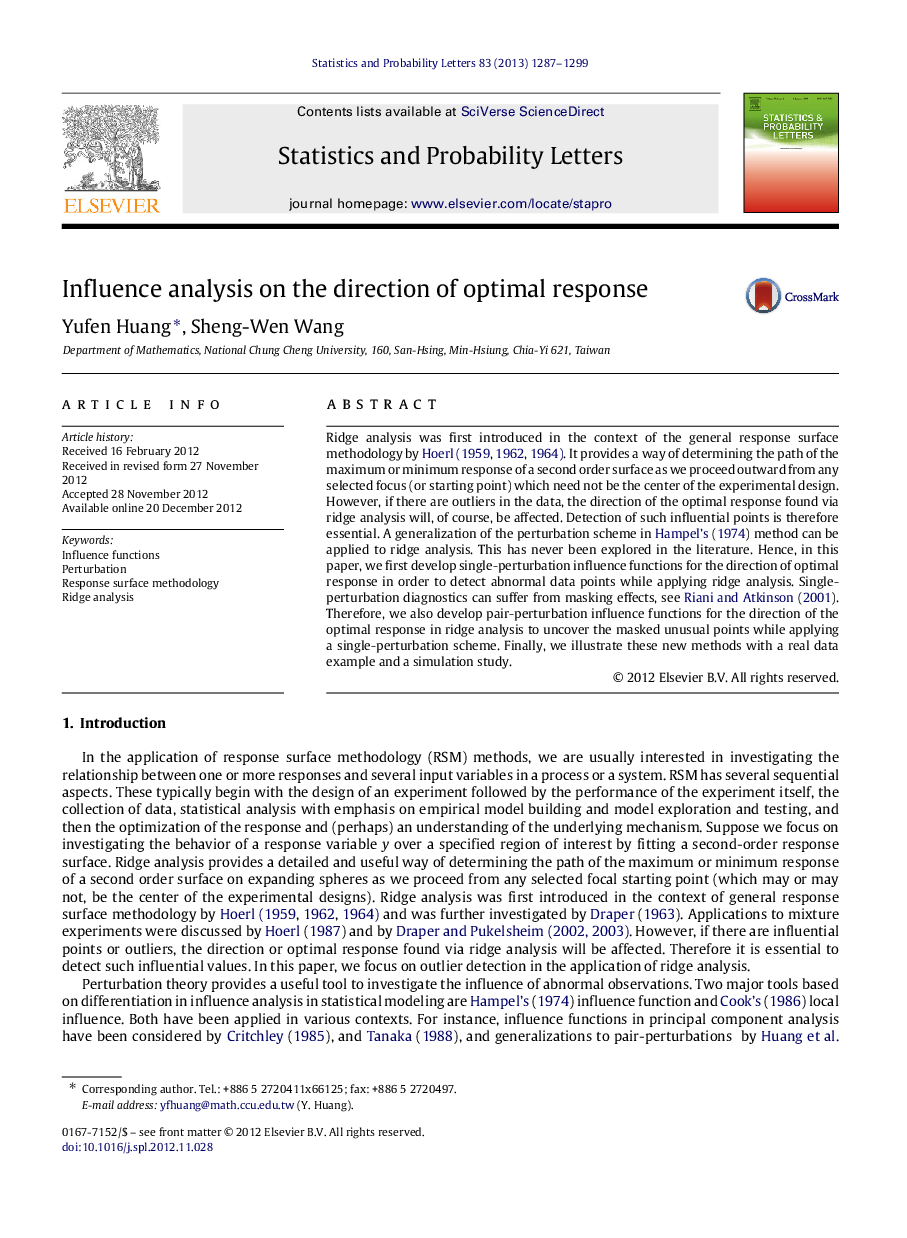| Article ID | Journal | Published Year | Pages | File Type |
|---|---|---|---|---|
| 1152177 | Statistics & Probability Letters | 2013 | 13 Pages |
Abstract
Ridge analysis was first introduced in the context of the general response surface methodology by Hoerl (1959, 1962, 1964). It provides a way of determining the path of the maximum or minimum response of a second order surface as we proceed outward from any selected focus (or starting point) which need not be the center of the experimental design. However, if there are outliers in the data, the direction of the optimal response found via ridge analysis will, of course, be affected. Detection of such influential points is therefore essential. A generalization of the perturbation scheme in Hampel's (1974) method can be applied to ridge analysis. This has never been explored in the literature. Hence, in this paper, we first develop single-perturbation influence functions for the direction of optimal response in order to detect abnormal data points while applying ridge analysis. Single-perturbation diagnostics can suffer from masking effects, see Riani and Atkinson (2001). Therefore, we also develop pair-perturbation influence functions for the direction of the optimal response in ridge analysis to uncover the masked unusual points while applying a single-perturbation scheme. Finally, we illustrate these new methods with a real data example and a simulation study.
Related Topics
Physical Sciences and Engineering
Mathematics
Statistics and Probability
Authors
Yufen Huang, Sheng-Wen Wang,
